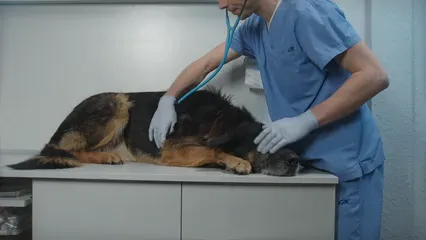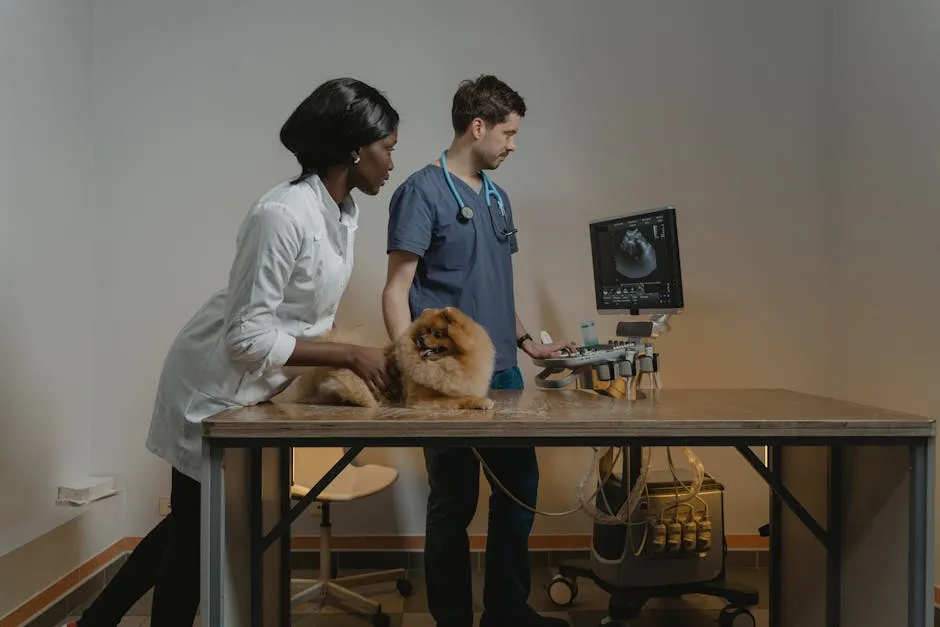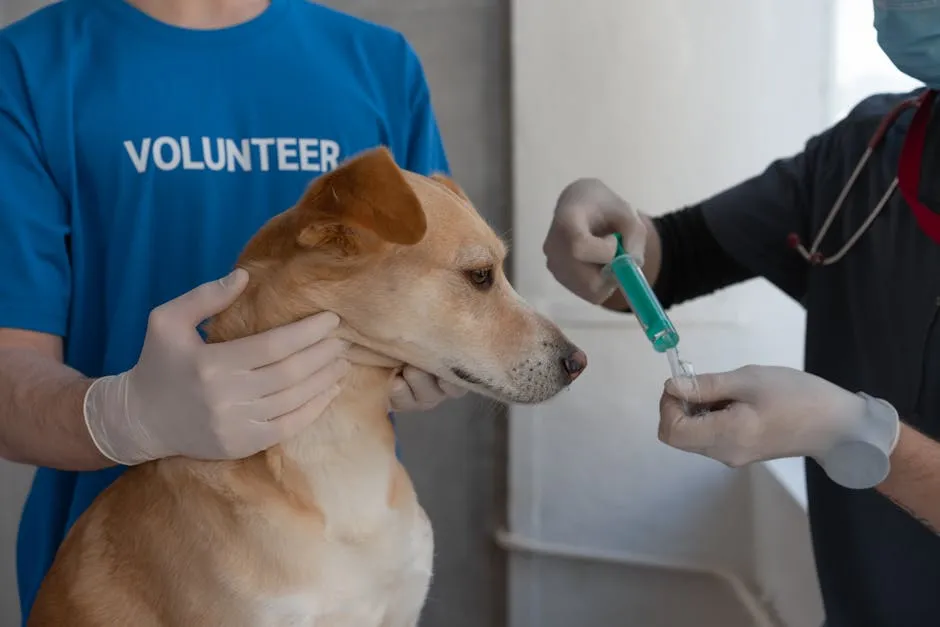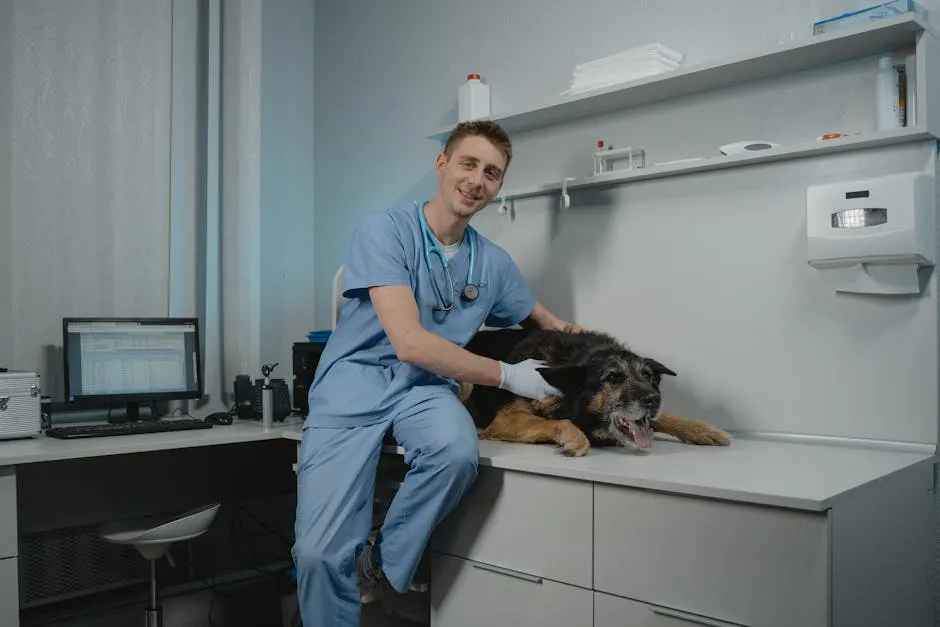What is Cerenia?
Cerenia, known scientifically as maropitant citrate, is the superhero of anti-nausea medications for dogs. Approved by the FDA, it tackles the pesky problem of vomiting and nausea in our canine friends. This medication is specifically designed for dogs, and while it may not have a cape, it certainly has a powerful impact.
Cerenia is available in two forms: tablets and injectable solutions. This versatility allows pet owners to choose the best method for their furry friends. The tablets are often used for everyday situations like motion sickness or nausea from chemotherapy, while the injections are typically reserved for more immediate needs in veterinary settings. If you’re considering Cerenia for your dog, you can find Cerenia Tablets for Dogs that can help keep your dog feeling great!
So, how does this magical medication work? Cerenia acts as a neurokinin-1 (NK1) receptor antagonist. Sounds fancy, right? In simpler terms, it blocks the action of a neurotransmitter called substance P in the brain, which is responsible for triggering vomiting. By preventing this signal, Cerenia provides relief from nausea and keeps your pup’s tummy happy.
It’s important to remember that Cerenia is not a universal solution. It’s primarily used for dogs aged 16 weeks and older. Puppies younger than this should steer clear, as their little bodies may not handle it as well. Additionally, Cerenia is not intended for long-term use, typically recommended for short-term relief during specific situations.
In summary, Cerenia is a go-to remedy for managing nausea and vomiting in dogs. With its FDA approval, various forms, and clever mechanism of action, it plays a crucial role in keeping our furry companions comfortable and healthy in the face of tummy troubles. Next up, let’s get into the nitty-gritty of how Cerenia works its magic!

Side Effects and Precautions
Common Side Effects
When your furry friend takes Cerenia, it’s essential to be aware of potential side effects. Most dogs tolerate this medication quite well, but some may experience mild issues. The most common side effects include lethargy, vomiting, and hypersalivation. Imagine your pup feeling a bit sleepy after a long day of barking at squirrels—that’s the lethargy we’re talking about!
While these side effects are generally mild, they can be concerning for pet owners. Lethargy might make your pooch less playful, and vomiting can be a cause for alarm, especially if it happens repeatedly. Hypersalivation, or excessive drooling, can also occur, which may have you questioning whether your dog is auditioning for a role in a soap opera!
The severity and frequency of these side effects vary among dogs. In studies, about 5% of dogs experienced vomiting after taking Cerenia. Hypersalivation occurred in roughly 12.5% of cases. Most dogs show no severe reactions, and any side effects typically resolve quickly. However, it’s crucial to keep an eye on your pup after administering the medication. If symptoms persist or worsen, consulting your veterinarian is the best course of action.
Having a Dog First Aid Kit on hand can also ensure you’re prepared for any unexpected mishaps while your dog is on medication. It’s better to be safe than sorry, right?
Who Should Avoid Cerenia?
Cerenia isn’t for every dog. Certain health conditions can make its use risky. For instance, dogs with liver disease should steer clear. The same goes for those with heart conditions—better safe than sorry, right? Puppies younger than 16 weeks should also avoid Cerenia, as their developing bodies might not handle it well.
Pregnant or nursing dogs should approach Cerenia with caution. The effects of the medication on their puppies are not fully understood, so it’s best to consult your veterinarian before proceeding. Always remember: your vet is your best ally when it comes to your dog’s health.
Before starting Cerenia, it’s vital to have an open conversation with your veterinarian. They will assess your dog’s health history and current medications to determine whether Cerenia is the right choice. After all, a healthy pup is a happy pup!

Monitoring and Follow-Up
Importance of Monitoring
After giving Cerenia to your furry friend, monitoring is essential. If you notice persistent vomiting or lethargy, it’s time to consult your veterinarian immediately. These could be signs that something isn’t quite right.
Additionally, be vigilant for signs of overdose. Symptoms may include excessive drooling, vomiting, or disorientation. If your dog displays any of these symptoms, contact your vet without delay. Regular check-ups and liver function tests help ensure your pup stays healthy while on medication.
Keeping track of your dog’s overall health will help you spot any changes. Monitoring helps you catch potential issues early and ensures your furry companion remains in tip-top shape. A Dog Health Monitoring Device can be a game-changer in tracking your pup’s vitals, making it easier to notice any irregularities.
Long-Term Use Considerations
Now, you may wonder—can Cerenia be used long-term? The short answer is no. Cerenia is generally not recommended for long-term use. Using it for extended periods can lead to health implications, including potential liver damage.
If your dog requires long-term management of nausea, consult your vet for alternatives. Other medications may be available that are better suited for chronic conditions. It’s all about finding the right fit for your furry friend.

In summary, Cerenia is a fantastic tool for managing acute nausea and vomiting in dogs. However, responsible monitoring and follow-up care are crucial for ensuring your dog’s safety and health while using this medication. Always prioritize your pup’s well-being and consult your veterinarian whenever you have concerns!
Cerenia Alternatives
Other Medications for Nausea in Dogs
When it comes to managing nausea in dogs, Cerenia is a popular choice. However, it’s not the only player in the game. There are several alternative medications that can also help our furry friends feel better. Let’s take a look at some of these options.
First up is metoclopramide. This medication acts as both an anti-nausea agent and a prokinetic, meaning it helps move food through the gastrointestinal tract. It’s often used for conditions like gastric stasis. While effective, metoclopramide can sometimes lead to side effects like drowsiness or restlessness. So, keep an eye on your pup after administration! If you want to have this handy, check out Metoclopramide for Dogs available on Amazon!
Next, we have ondansetron, a medication often prescribed for chemotherapy-induced nausea. It works by blocking serotonin receptors in the brain. Ondansetron is particularly effective for dogs undergoing cancer treatments, providing much-needed relief. Side effects are generally minimal but can include constipation or lethargy.

Lastly, there’s dimenhydrinate, commonly known as Dramamine. This antihistamine is great for motion sickness and is available over-the-counter. It can make your dog a bit drowsy, but that might be a small price to pay for a calm car ride. If you’re hitting the road, consider grabbing some Dimenhydrinate (Dramamine) for Dogs.
Now, how does Cerenia stack up against these alternatives? Cerenia specifically targets neurokinin-1 (NK1) receptors, which is a unique selling point. This means it can effectively manage vomiting caused by various triggers, including motion sickness and chemotherapy. In contrast, metoclopramide and ondansetron focus on different pathways, which might make them more suitable in certain situations.

So, when should you consider alternatives? If your dog has a specific health condition that requires a tailored approach, or if they experience side effects from Cerenia, discussing alternatives with your veterinarian is essential. Remember, each dog is different, and what works for one may not work for another. Always consult your vet to determine the best option for your pup!
Conclusion
Cerenia is a remarkable medication that has changed the way we manage nausea and vomiting in dogs. With its effective mechanism of action and generally safe profile, it provides relief to countless canine companions suffering from these distressing symptoms. However, as with any medication, it’s crucial to use Cerenia responsibly and under the guidance of a veterinarian. Always keep an eye on your furry friend for any side effects and consult your vet for tailored advice. Remember, a happy dog is a healthy dog!

FAQs
How quickly does Cerenia work?
Cerenia typically takes effect within 1-2 hours after administration. So, if your dog has tummy troubles, relief is just around the corner!
Can Cerenia be given long-term?
Cerenia is not recommended for long-term use without veterinary advice. Chronic use may lead to potential health issues. Always consult your vet before making any changes to your dog’s medication plan.
What if my dog experiences side effects?
Contact your veterinarian immediately if you notice any adverse reactions. Side effects like lethargy or vomiting can be concerning, so don’t hesitate to reach out for professional guidance.
Is Cerenia safe for puppies?
Cerenia should not be used in puppies under 16 weeks of age without veterinary guidance. Their little bodies are still developing, and it’s best to err on the side of caution.
How should Cerenia be administered?
It’s best given with a small meal to enhance absorption. Avoid wrapping the tablet in food, as this may delay the medication’s effectiveness. Timing is everything, especially if you’re planning a road trip!
For your dog’s overall well-being, don’t forget to stock up on essential supplies like a Dog Vitamins and Supplements. They can help boost your pup’s health and keep them feeling their best!
Please let us know what you think about our content by leaving a comment down below!
Thank you for reading till here 🙂
If you’re looking for effective strategies for managing your puppy’s bathroom habits, check out these best practices for potty training puppies in apartments.
All images from Pexels





